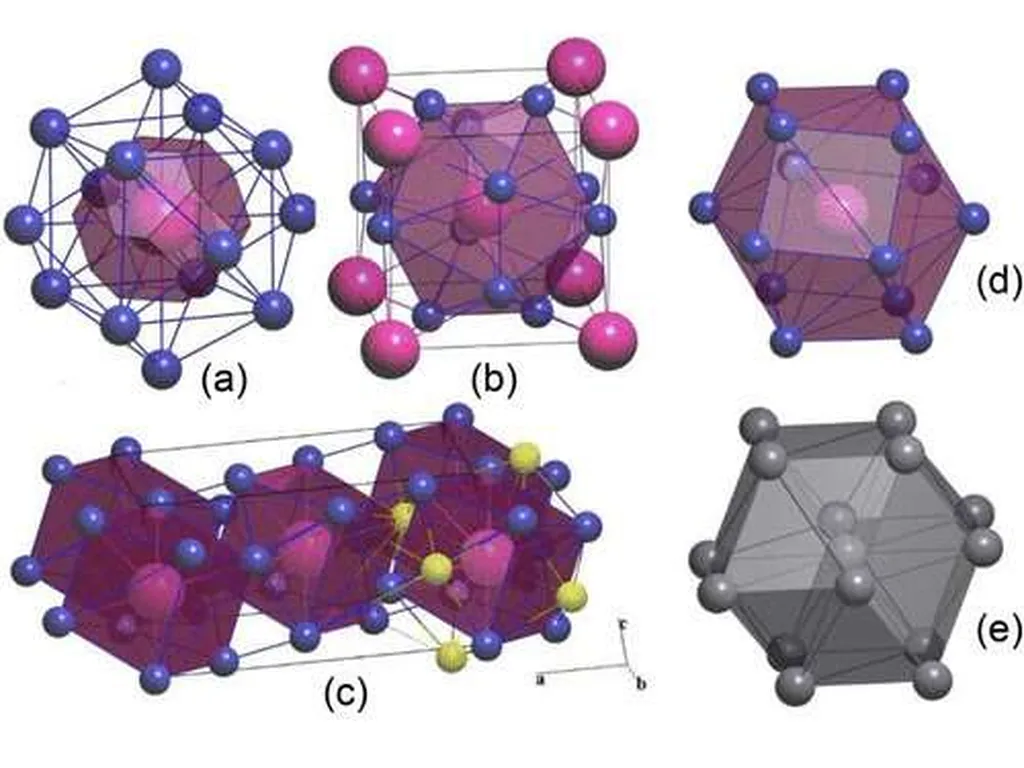In a groundbreaking study published in the journal *Computational Materials Today* (translated from Chinese as “Computational Materials Today”), researchers have uncovered a promising avenue for high-temperature superconductivity in lithium-silver compounds under extreme pressure. This discovery could have significant implications for the energy sector, particularly in the development of more efficient and powerful superconducting materials.
The research, led by Yao Sun of the Key Laboratory of Material Simulation Methods and Software of the Ministry of Education and the State Key Laboratory of Superhard Materials at Jilin University in China, delves into the behavior of lithium-rich compounds under pressures ranging from 100 to 300 gigapascals (GPa). Using advanced crystal structure prediction and first-principles calculations, Sun and his team identified two thermodynamically stable structures within the Li-Ag system: Cmcm Li7Ag, stable between 104 and 190 GPa, and its pressure-induced Pnnm analog, stable above 190 GPa.
What makes this discovery particularly exciting is the exceptional superconducting transition temperatures (Tc) observed in these structures. At pressures of 180–200 GPa, the compounds exhibit a Tc of 40 Kelvin, rivaling the performance of the well-known superconductor MgB2, which has a Tc of 39 Kelvin.
“These findings highlight the potential for high-Tc superconductivity in lithium-rich compounds,” Sun explained. “The unique multicentered chemical bonding driven by interstitial spz-hybridization opens up new possibilities for designing quantum materials with enhanced superconducting properties.”
The study reveals that the exceptional superconducting properties arise from the interaction of lithium p-electrons and silver p-electrons with the lithium atomic framework. This interaction leads to a significant enhancement of the Tc value, making these compounds highly promising for future applications.
The implications for the energy sector are profound. Superconductors are materials that can conduct electricity without resistance, making them highly efficient for energy transmission and storage. High-temperature superconductors, in particular, are sought after because they can operate at higher temperatures, reducing the need for expensive and complex cooling systems.
“This research could pave the way for the development of more efficient and cost-effective superconducting materials,” said a spokesperson for the energy sector. “The potential to achieve high-Tc superconductivity in lithium-rich compounds is a significant step forward in our quest for sustainable and advanced energy solutions.”
The discovery also underscores the importance of exploring extreme conditions to uncover new materials with unique properties. By subjecting lithium-silver compounds to high pressures, researchers were able to induce structural changes that led to enhanced superconducting behavior.
As the world continues to seek innovative solutions to energy challenges, this research offers a glimpse into the future of superconducting materials. The findings not only advance our understanding of high-temperature superconductivity but also open up new avenues for the design and development of next-generation energy technologies.
In the words of Yao Sun, “This is just the beginning. The potential for high-Tc superconductivity in lithium-rich compounds is vast, and we are excited to explore the possibilities further.”

